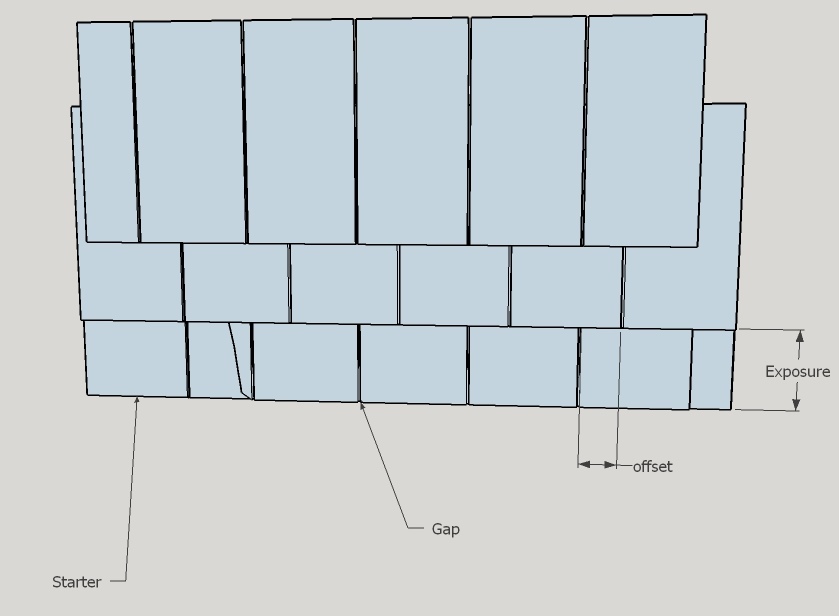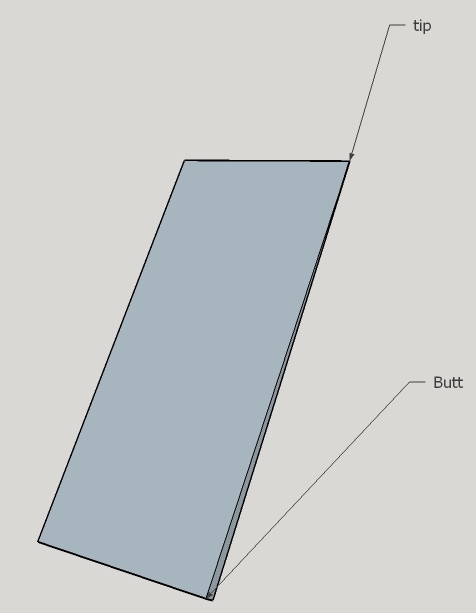 cedar shingle terms
cedar shingle terms
As frequently as not, when I am called with an inquiry about shingles, I am asked for shakes. There is a difference.
Shakes are a different product than shingles. Shakes are split, either by hand or machine. After they are split, they are usually re-sawn into two shakes. The exposed surface has a heavy corrugation that runs through the length of the shingle with a milled face on the reverse.
Shingles on the other hand, are milled on all faces. Typically, they are more uniform than shakes.
We produce shingles. White Cedar that is indigenous to Eastern Canada and The United States, is not as large a tree as Red Cedar. Typically, White Cedar has a considerable number of knots on the trunk as well. Therefore, it does not lend itself as well to producing shakes as Red Cedar does.
The image on the right is a representation of a few installed shingles.
When a wall or roof of shingles is started there is a course of shingles nailed onto the wall, deck or strapping. A second course of shingles is offset to the gaps of the first and nailed directly over the first. This second course of shingles is the first exposed course. A cutaway of this first exposed course is shown in the lower left corner of the graphic.
